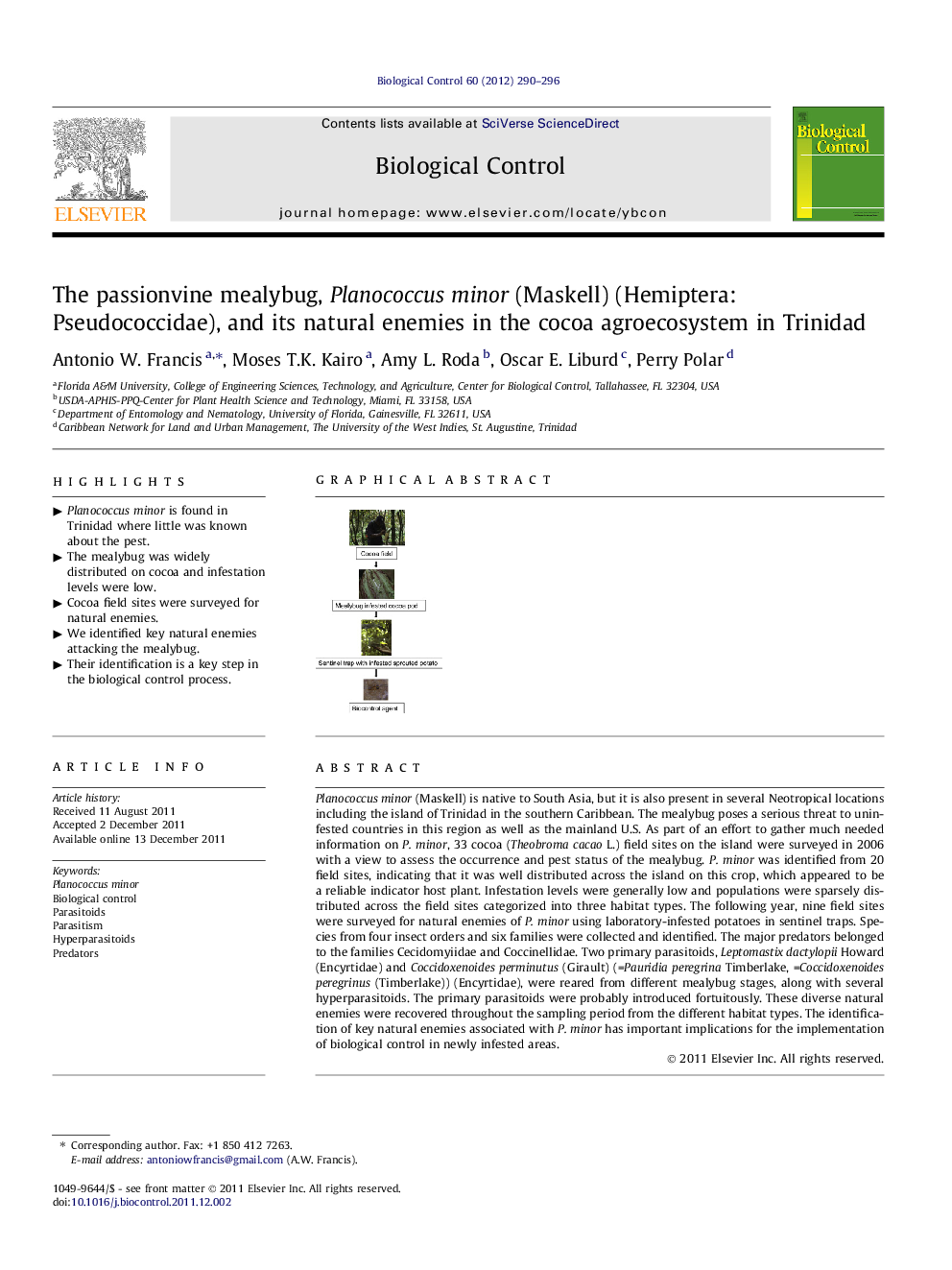| Article ID | Journal | Published Year | Pages | File Type |
|---|---|---|---|---|
| 4504092 | Biological Control | 2012 | 7 Pages |
Planococcus minor (Maskell) is native to South Asia, but it is also present in several Neotropical locations including the island of Trinidad in the southern Caribbean. The mealybug poses a serious threat to uninfested countries in this region as well as the mainland U.S. As part of an effort to gather much needed information on P. minor, 33 cocoa (Theobroma cacao L.) field sites on the island were surveyed in 2006 with a view to assess the occurrence and pest status of the mealybug. P. minor was identified from 20 field sites, indicating that it was well distributed across the island on this crop, which appeared to be a reliable indicator host plant. Infestation levels were generally low and populations were sparsely distributed across the field sites categorized into three habitat types. The following year, nine field sites were surveyed for natural enemies of P. minor using laboratory-infested potatoes in sentinel traps. Species from four insect orders and six families were collected and identified. The major predators belonged to the families Cecidomyiidae and Coccinellidae. Two primary parasitoids, Leptomastix dactylopii Howard (Encyrtidae) and Coccidoxenoides perminutus (Girault) (=Pauridia peregrina Timberlake, =Coccidoxenoides peregrinus (Timberlake)) (Encyrtidae), were reared from different mealybug stages, along with several hyperparasitoids. The primary parasitoids were probably introduced fortuitously. These diverse natural enemies were recovered throughout the sampling period from the different habitat types. The identification of key natural enemies associated with P. minor has important implications for the implementation of biological control in newly infested areas.
Graphical abstractFigure optionsDownload full-size imageDownload as PowerPoint slideHighlights► Planococcus minor is found in Trinidad where little was known about the pest. ► The mealybug was widely distributed on cocoa and infestation levels were low. ► Cocoa field sites were surveyed for natural enemies. ► We identified key natural enemies attacking the mealybug. ► Their identification is a key step in the biological control process.
